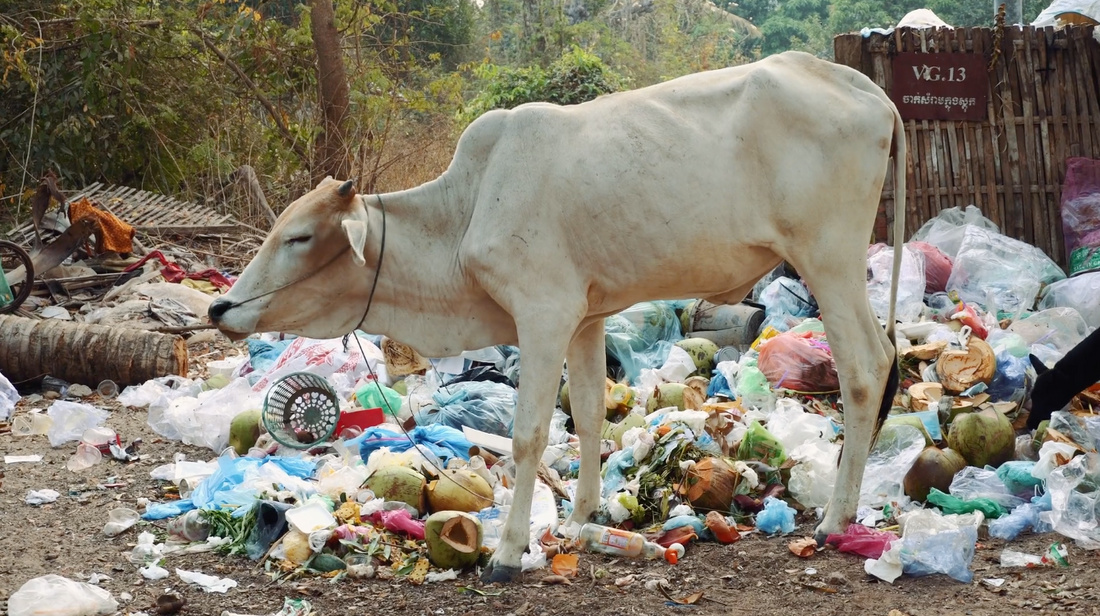Modern industry is poison
In our modern world, the convenience and versatility of plastic have made it a ubiquitous material in virtually every aspect of our lives. From packaging and clothing to electronics and construction, plastic is everywhere. However, this over reliance on artificial materials and industrial processes has put the world in a global crisis, posing severe threats to our environment, food security, and health. It's time we seriously consider a shift towards a zero-plastic future.
The Convenience Trap: How We Got Here
The rise of plastic began in the mid-20th century, driven by a desire to create quick and easy processes for mass production. Plastic offered a cheap, durable, and versatile solution, revolutionizing industries and consumer goods. The benefits were immediate: lighter materials, lower costs, and increased production speeds. However, this focus on short-term convenience has led to long-term consequences that we are only now beginning to fully understand.
The Hidden Costs of Plastic
While plastic itself can be highly useful, its production, use, and disposal come with significant hidden costs. Modern industry’s reliance on cheap plastic materials and toxic adhesives has introduced a range of harmful substances into our environment.
The Plastic Waste Crisis
One of the most pressing issues is the impact of plastic waste in landfills. Globally, we produce about 380 million tons of plastic every year, and only about 9% of it gets recycled. The rest ends up in landfills, oceans, and other parts of the environment. It's estimated that 8 million tons of plastic waste enter the oceans annually, equivalent to a truckload of plastic dumped into the sea every minute.
Toxins in Landfills
Plastic does not biodegrade in the same way natural materials do. Instead, it breaks down into smaller and smaller particles, known as microplastics, which persist in the environment for hundreds, if not thousands, of years. As plastic waste accumulates in landfills, toxins leach out, seeping into the soil and groundwater. These toxins include harmful chemicals such as bisphenol A (BPA), phthalates, and heavy metals, which can cause serious health issues.
For instance, a study conducted in 2020 found that landfills are significant sources of microplastic pollution. They release about 200,000 metric tons of microplastics annually, which can contaminate nearby soil and water sources, posing risks to both the environment and human health.
Ecological Devastation
The contamination from landfill waste doesn’t stop at the soil. These toxins make their way into rivers, lakes, and oceans, damaging ecosystems and marine life. Aquatic organisms ingest microplastics and associated chemicals, which then bioaccumulate up the food chain, affecting larger animals and, eventually, humans. This cycle devastates food security by compromising the safety and quality of seafood and freshwater resources that billions of people depend on for nutrition.
A 2019 study found that 90% of seabirds have plastic in their stomachs, and it is estimated that by 2050, there will be more plastic than fish in the ocean by weight. This not only threatens marine biodiversity but also disrupts entire ecosystems that rely on these species.
Human Health at Risk
The threats posed by plastic pollution are not confined to the environment. Human health is directly jeopardized by the toxins released from plastics. Studies have linked exposure to chemicals found in plastics to a range of health issues, including hormonal disruptions, reproductive problems, and even cancer. As microplastics infiltrate our food and water supply, they introduce these harmful substances into our bodies, with potentially catastrophic consequences for public health.
A report by the World Health Organization in 2019 highlighted that microplastics are present in 93% of bottled water and 83% of tap water samples tested globally, raising significant concerns about long-term health impacts.
The Path to Zero Plastic
Given the severity of the crisis, it is clear that we need to transition towards a zero-plastic future. This is not an easy task, but it is essential for the health of our planet and ourselves. Here are some steps we can take to move towards zero plastic:
Reducing Single-Use Plastics
A significant portion of plastic waste comes from single-use items such as packaging, bottles, and bags. By reducing our reliance on these disposable products, we can significantly cut down on the amount of plastic waste generated. This can be achieved through measures such as banning single-use plastics, promoting reusable alternatives, and encouraging consumers to make more sustainable choices.
Investing in Sustainable Alternatives
Research and development in sustainable materials and processes are crucial for a zero-plastic future. plant-based materials, and innovative solutions offer promising alternatives to traditional plastics. Investing in these technologies can help reduce our dependence on harmful plastics and mitigate their environmental impact.
The modern industry’s reliance on plastic has indeed poisoned our environment, damaging ecosystems, food security, and human health. However, by taking concerted action to reduce plastic use & invest in sustainable alternatives, we can work towards a healthier, more sustainable future. The journey to zero plastic is challenging, but it is a necessary step to protect our planet and ensure the well-being of future generations.
Be part of the solution.





